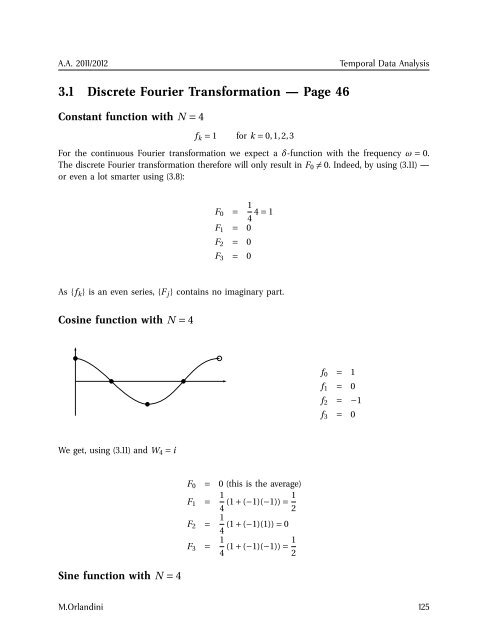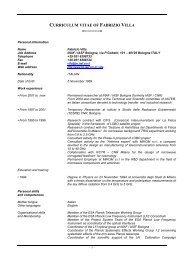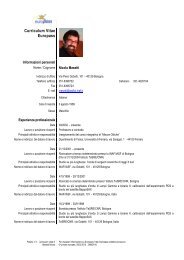booklet format - inaf iasf bologna
booklet format - inaf iasf bologna
booklet format - inaf iasf bologna
You also want an ePaper? Increase the reach of your titles
YUMPU automatically turns print PDFs into web optimized ePapers that Google loves.
A.A. 2011/2012<br />
Temporal Data Analysis<br />
3.1 Discrete Fourier Trans<strong>format</strong>ion — Page 46<br />
Constant function with N = 4<br />
f k = 1 for k = 0,1,2,3<br />
For the continuous Fourier trans<strong>format</strong>ion we expect a δ-function with the frequency ω = 0.<br />
The discrete Fourier trans<strong>format</strong>ion therefore will only result in F 0 ≠ 0. Indeed, by using (3.11) —<br />
or even a lot smarter using (3.8):<br />
F 0 = 1 4 4 = 1<br />
F 1 = 0<br />
F 2 = 0<br />
F 3 = 0<br />
As {f k } is an even series, {F j } contains no imaginary part.<br />
Cosine function with N = 4<br />
f 0 = 1<br />
f 1 = 0<br />
f 2 = −1<br />
f 3 = 0<br />
We get, using (3.11) and W 4 = i<br />
F 0 = 0 (this is the average)<br />
F 1 = 1 4 (1 + (−1)(−1)) = 1 2<br />
F 2 = 1 (1 + (−1)(1)) = 0<br />
4<br />
F 3 = 1 4 (1 + (−1)(−1)) = 1 2<br />
Sine function with N = 4<br />
M.Orlandini 125

















